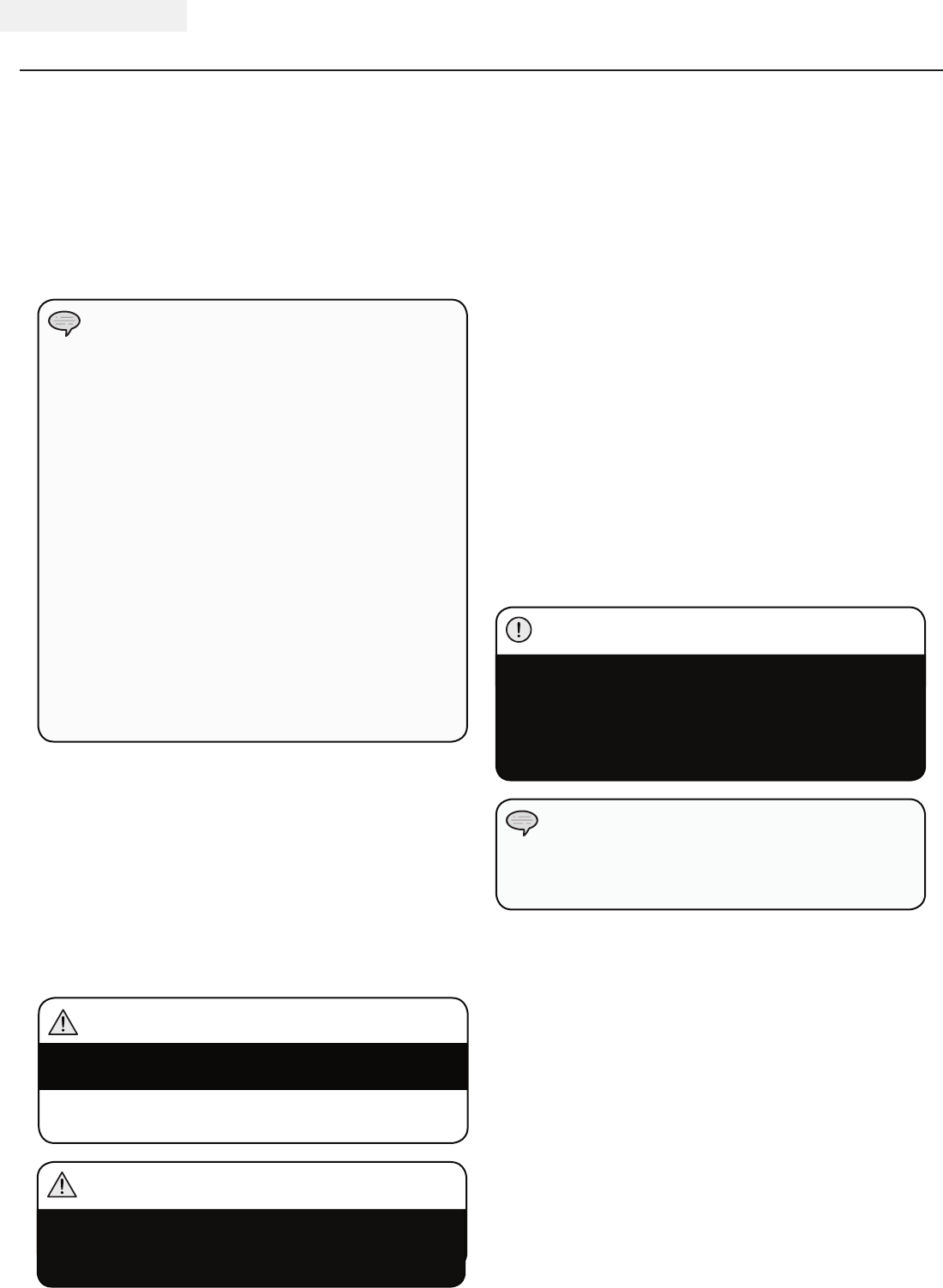
REV 75537i-20140703 14
75537i ENGLISH
OPERATION
Stopping the Engine
1. Turn off and unplug all electrical loads. Never start
or stop the generator with electrical devices plugged
in or turned on.
2. Let the generator run at no-load for several minutes
to stabilize internal temperatures of the engine and
generator.
3. Turn the Fuel Valve to the “OFF” position.
4. Let the engine run until fuel starvation has stopped
the engine. This usually takes a few minutes.
5. Turn the engine switch to the “OFF” position.
6. Turn the battery switch to “OFF” position if
applicable.
Important: Always ensure that the Fuel Valve and the
Engine Switch and battery switch are in the “OFF”
position when the engine is not in use.
Be sure all electric devices including the lines and plug
connections are in good condition before connection to
the generator.
NOTE
Do not start the vehicle while the battery charging cable is
connected and the generator is running. It will not give the
battery a boost of power. The vehicle or the generator may
be damaged. Charge only vented wet lead acid batteries.
Other types of batteries may burst, causing personal injury
or damage.
CAUTION
Connecting a generator to your electric utility company’s
power lines or to another power source may be against
the law. In addition this action, if done incorrectly, could
damage your generator and appliances and could cause
serious injury or even death to you or a utility worker
who may be working on nearby power lines. If you plan
to run a portable electric generator during an outage,
please notify your electric utility company immediately
and remember to plug your appliances directly into the
generator. Do not plug the generator into any electric
outlet in your home. Doing so could create a connection
to the utility company power lines. You are responsible
for ensuring that your generator’s electricity does not
feed back into the electric utility power lines.
If the generator will be connected to a building electrical
system, consult your local utility company or a qualified
electrician. Connections must isolate generator power
from utility power and must comply with all applicable
laws and codes.
NOTE
Connecting Electrical Loads
1. Let the engine stabilize and warm up for a few
minutes after starting
2. Plug in and turn on the desired 120 Volt AC single
phase, 60 Hz electrical loads.
– DO NOT connect 3-phase loads to the generator.
– DO NOT connect 50 Hz loads to the generator.
– DO NOT overload the generator.
While charging a device do not place on the exhaust side
of the generator. Extreme heat caused by exhaust can
damage the device, and cause a potential fire hazard.
WARNING
Do not operate a device while it is plugged in to the 12V
DC outlet.
Prolonged exposure to engine exhaust can cause serious
injury or death.
WARNING
12V DC Outlet
The 12V DC outlet can be used with the supplied
charge cable and USB charger and other commercially
available 12V DC automotive style plugs. The DC output
is unregulated and can damage some products. Confirm
your accessory input voltage range is at least 12-24V
DC. When using the DC outlet turn the Economy mode
switch to the “OFF” position.
12V DC Outlet – Battery Charging
1. Before connecting the battery charging cable to a
battery that is installed in a vehicle, disconnect the
vehicle battery ground cable from the negative (–)
battery terminal.
2. Plug the battery charging cable into the 12V DC
receptacle of the generator.
3. Connect the red (+) battery charger lead to the red
(+) battery terminal.
4. Connect the black (–) battery charger lead to the
black (–) battery terminal.
5. Start the generator.
Important: The 12V DC outlet is ONLY to be used with
the supplied 12V DC battery charging cable. The 12V
DC output is unregulated and will damage other 12V
DC products. When using the 12V DC outlet, turn the
Economy mode switch to the “OFF” position. Be sure all
electric devices including the lines and plug connections
are in good condition before connection to the generator.


















